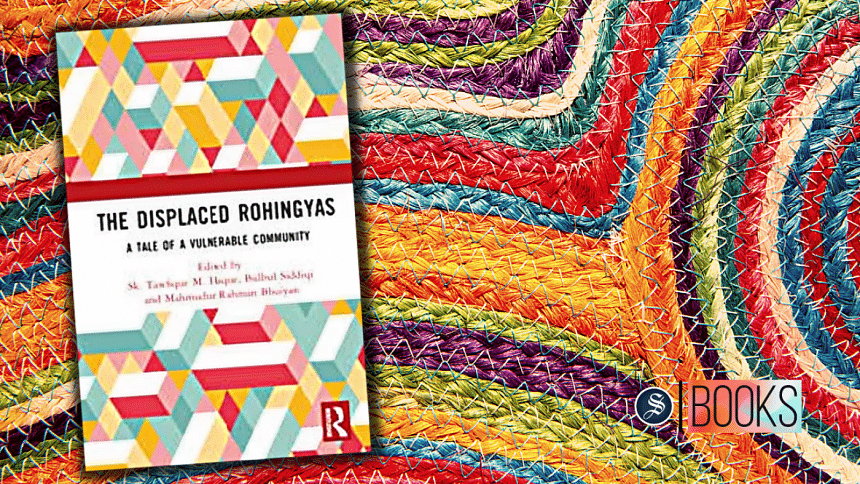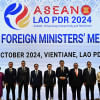A tale of forced displacement and uncertain futures

Globally, forced displacement and refugee issues have become a pressing concern. SK Tawfique M Haque, Bulbul Siddiqi, and Mahmudur Rahman Bhuiyan offer an edited volume as a recent addition to the growing literature on forced displacement focused on the Rohingya refugee context. The book, titled The Displaced Rohingyas: A Tale of a Vulnerable Community, comprises 13 chapters under five broader sections discussing forced displacement, statelessness, uncertainties, vulnerability, representations, and related policies. What I find significant about this book is that it presents narratives of Rohingya people telling about the harrowing experience of torture and genocide that occurred against them in Myanmar.
The book starts with a historical analysis of the Rohingya community in Arakan State in Myanmar. Sultana and Harun show us that the manifold "meaning and manifestations" of religion are being politicised, with geopolitics playing one key role in the causation of the forced migration of Rohingyas. Hence, reciprocal religious tolerance and "tolerance for recognition" between Muslims (Rohingya) and Buddhists in Myanmar is an essential remedy suggested by Ismail and Rahman in the third chapter.
The protracted lives in Bangladesh for Rohingya refugees turn into an uncertain future as their belongingness has been confounded within these makeshift camps, and the hope to return to the homeland remains undefined. The book presents a comprehensive collection of research-based findings revealing the humanitarian crisis and the vulnerable life of Rohingya people in Bangladesh camps. Based on first-hand research findings and literature review, the contributors in several chapters illustrated the melancholic life realities and vulnerabilities of Rohingya people in Bangladesh camps who are encountering multifaceted challenges. Such realities include limited mobility and working opportunities, serious health issues, including sexual and reproductive health risks for adolescents and young women, lack of safety for women and sex trafficking, lack of education, gender-based violence, and alarming cases of human trafficking while attempting to migrate to a third country.
The book also tells us about how Rohingyas suffer in the process of finding shelter in a different country other than Bangladesh. The chapter by Mahbubul Haque and Tawfique Haque tells the readers that many Rohingyas' tried to find asylum in Malaysia and Thailand but suffered in getting assistance from national and international agencies because these two countries did not sign the 1951 Convention and 1967 Protocol about the status of refugees, eventually making Rohingyas more vulnerable and struggle to claim their "right to exist".
Life in refugee camps in Bangladesh is not even the same for all Rohingyas. The sixth chapter of the book shows that the process of registration as a recognised refugee by the UNHCR and Bangladesh state has created stratifications and divided group interests among Rohingyas who arrived at different times in Bangladesh. For instance, Rohingyas living in camps since the 1990s are under a registration process to get better services. At the same time, the recent influx of Rohingyas from 2017 are treated as Forcibly Displaced Myanmar Nationals (FDMN) and unregistered. The unregistered status of FDMNs hinders the repatriation process and develops negative dint with registered ones.
Chapters under the final theme highlight the importance of Rohingyas' voice, media representations in different countries, and policy formulation in both home and host countries for sustainable solutions to this crisis. AQMA Bhuiyan's chapter reminds us of the meaning of 'holocaust' and argues that the oral accounts of Rohingya people must be heard to acknowledge the genocide that occurred to this community as their voice becomes a marker of their identity facing such atrocity.
Besides, the following two chapters emphasise the effect of newspaper representation on Rohingya issues. Rahman's chapter shows that the major newspapers in India and China avoid using terms like 'violence,' 'atrocity,' or 'genocide' in presenting Rohingya issues. They remain lenient to their government's role in addressing the crisis in Myanmar, concealing the truth about the precaution and atrocities because of their country's geopolitical and economic mutual interests. In a contrasting position, the chapter by Kamruzzaman, Kabir, and Siddiqi tells us that the representation of Rohingyas in the Bangladesh newspapers is more focused on the host community's challenges like management of vulnerable living conditions for Rohingyas in the makeshift camps, potential security threats to the host country and the necessity of repatriation as a solution.
The book concludes with two last chapters discussing the reality of policy perception of the Rohingya crisis and the way forward. Dutta shows that Bangladesh has no specific law or policy regarding refugees, and full-scale repatriation is a distant reality since no effective bilateral initiatives have been taken yet. The last chapter by Haque and Rahman points out that the lack of domestic consultation for a more comprehensive policy regarding Rohingyas led to Bangladesh's unrealistic hope from the international community, eventually suffering from frequent local adjustments. Bangladesh's "pacifist approach", as the authors conclude, is a "strong selling point", yet not enough as a multi-layered and multi-pronged approach is essential to achieve a sustainable and secure reparation of Rohingyas to Myanmar.
Adding discussion to issues, such as tolerance and cohesion in the host country, religion-based extreme movements and mental health challenges in camp life, could make this book more comprehensive. Nevertheless, the book is a thought-provoking read for scholars, researchers and anyone interested in studying and understanding forced migration in the context of Myanmar's Rohingya community.
Nur Newaz Khan is an assistant professor in the Department of Political Science and Sociology at North South University. He completed his doctoral degree in Medical Anthropology from the Australian National University (ANU), Australia. Along with his other research interests, two of his current researches engage in studying cultural competencies in mental health services for Rohingyas in Bangladesh refugee camps and understanding cultural heritage among the indigenous communities in Bangladesh, funded by NSU.

 For all latest news, follow The Daily Star's Google News channel.
For all latest news, follow The Daily Star's Google News channel. 











Comments